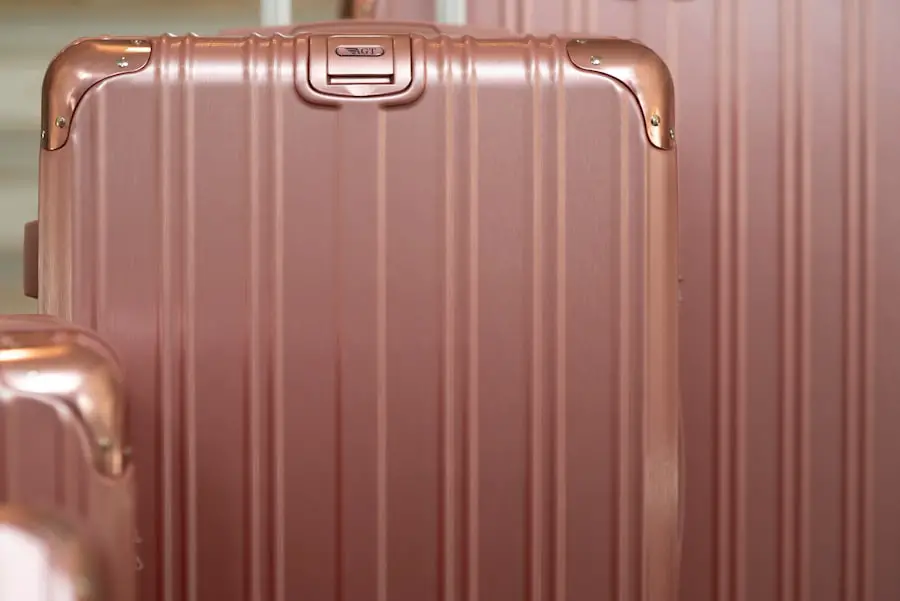Bed bugs, scientifically known as Cimex lectularius, are small, parasitic insects that primarily feed on the blood of humans and other warm-blooded hosts. These nocturnal creatures are notorious for their ability to infest homes, hotels, and other accommodations, leading to significant discomfort and distress for those affected. Adult bed bugs are typically about the size of an apple seed, with a flat, oval shape that allows them to hide in crevices and seams of furniture, bedding, and walls.
Their reddish-brown color and ability to blend into their surroundings make them particularly challenging to detect until an infestation has become established. The resurgence of bed bugs in recent years can be attributed to various factors, including increased international travel, changes in pest control practices, and the insects’ remarkable resilience to many common insecticides. Unlike many pests, bed bugs do not transmit diseases; however, their bites can lead to severe itching, allergic reactions, and secondary infections due to scratching.
Understanding the biology and behavior of bed bugs is crucial for effective prevention and control strategies, especially in environments where multiple rooms are involved, such as hotels or multi-unit dwellings.
Key Takeaways
- Bed bugs are small, reddish-brown insects that feed on the blood of humans and animals while they sleep.
- Bed bugs can travel by hitching a ride on clothing, luggage, furniture, and other items.
- Bed bugs can easily travel between rooms through cracks, crevices, and electrical outlets.
- Factors such as clutter, proximity to infested areas, and the availability of hiding spots can influence bed bug travel.
- Preventing bed bugs from traveling between rooms involves regular inspection, decluttering, and sealing cracks and crevices.
How Bed Bugs Travel
Bed bugs are adept travelers, primarily hitching rides on clothing, luggage, and personal belongings. Their ability to cling to fabric and other surfaces allows them to move from one location to another with ease. For instance, a traveler may unknowingly pick up bed bugs from an infested hotel room and bring them home in their suitcase or on their clothes.
Once they arrive at their destination, these pests can quickly disperse throughout the living space, seeking out hiding spots in mattresses, box springs, and furniture. In addition to human-assisted travel, bed bugs can also move between units in multi-family housing through shared walls, electrical outlets, and plumbing systems. This phenomenon is particularly concerning in apartment complexes or condominiums where infestations can spread rapidly from one unit to another.
Bed bugs can crawl through tiny gaps and cracks, making it essential for residents to be vigilant about potential signs of an infestation not only in their own living spaces but also in adjacent areas.
Can Bed Bugs Travel Between Rooms?

Yes, bed bugs can travel between rooms, especially in environments where multiple rooms are in close proximity. Their ability to navigate through small openings allows them to move from one room to another without much difficulty. In hotels, for example, bed bugs may migrate from an infested room to adjacent rooms through shared walls or even hallways.
This movement can occur as they search for new hosts or as a response to overcrowding in their current location. In residential settings, the risk of bed bugs traveling between rooms is heightened when individuals move items from one room to another without proper inspection. For instance, if a person brings a piece of furniture or clothing that has been in an infested area into a different room, they may inadvertently introduce bed bugs into a previously unaffected space.
This underscores the importance of thorough inspections and preventive measures when dealing with potential infestations.
Factors that Influence Bed Bug Travel
| Factor | Influence |
|---|---|
| Temperature | Bed bugs prefer temperatures around 70-80°F |
| Carbon Dioxide | Bed bugs are attracted to carbon dioxide, which is exhaled by humans and animals |
| Clutter | Clutter provides more hiding spots for bed bugs |
| Travel | Bed bugs can hitchhike on luggage, clothing, and other belongings during travel |
| Chemical Odors | Bed bugs can be repelled by certain chemical odors |
Several factors influence how and why bed bugs travel between rooms or locations. One significant factor is the availability of hosts. Bed bugs are attracted to carbon dioxide and body heat emitted by humans and animals.
In environments where hosts are plentiful, such as hotels or crowded living situations, bed bugs are more likely to move around in search of food. Conversely, if a room is unoccupied for an extended period, bed bugs may remain dormant until a new host becomes available. Environmental conditions also play a crucial role in bed bug movement.
Temperature and humidity levels can affect their activity patterns; warmer temperatures tend to increase their metabolism and feeding frequency. Additionally, the presence of clutter can provide more hiding spots for bed bugs, facilitating their movement between rooms as they seek out new areas to infest. Understanding these factors can help individuals and pest control professionals develop targeted strategies for managing bed bug populations effectively.
Preventing Bed Bugs from Traveling Between Rooms
Preventing bed bugs from traveling between rooms requires a multifaceted approach that includes vigilance and proactive measures. One effective strategy is to conduct regular inspections of living spaces, particularly in areas where bed bugs are known to thrive, such as bedrooms and common areas. Homeowners should check for signs of infestation, including shed skins, fecal spots, and live insects.
Early detection is key to preventing the spread of bed bugs throughout the home. Another important preventive measure is to minimize clutter in living spaces. Reducing the number of items that can harbor bed bugs makes it easier to spot potential infestations and limits the insects’ ability to travel undetected.
Additionally, when traveling or staying in hotels, individuals should take precautions such as inspecting bedding and furniture for signs of bed bugs before settling in. Using protective encasements on mattresses and box springs can also help prevent bed bugs from establishing themselves in these areas.
Detecting Bed Bugs in Different Rooms

Inspecting High-Risk Areas
Homeowners should begin by examining areas where people sleep or rest, such as beds, couches, and chairs. Checking seams, folds, and crevices is essential since these are common hiding spots for bed bugs during the day.
Visual Inspection and Other Indicators
Using a flashlight can help illuminate dark areas where these pests may be lurking. In addition to visual inspections, individuals should be aware of other indicators of bed bug presence. Bites on the skin often appear as small red welts arranged in a line or cluster and may be accompanied by itching or irritation. Fecal stains—small dark spots on bedding or furniture—can also signal an infestation.
Seeking Professional Help
If there is suspicion of bed bugs in multiple rooms, it may be beneficial to enlist the help of a professional pest control service that specializes in detecting and treating bed bug infestations.
Treating Bed Bugs in Multiple Rooms
Treating bed bugs in multiple rooms can be a complex process that requires careful planning and execution. The first step is to confirm the presence of bed bugs through thorough inspections across all affected areas. Once confirmed, it is essential to develop a comprehensive treatment plan that addresses each room individually while considering the interconnectedness of the spaces.
Integrated pest management (IPM) strategies are often recommended for treating bed bug infestations effectively. This approach combines various methods such as chemical treatments with non-chemical options like heat treatment or vacuuming. For example, heat treatment involves raising the temperature of infested rooms to levels lethal for bed bugs while ensuring that all items within those spaces are treated simultaneously.
Additionally, sealing cracks and crevices can help prevent future infestations by eliminating potential entry points for these pests.
Conclusion and Summary
Bed bugs pose a significant challenge due to their ability to travel between rooms and establish infestations quickly. Understanding their behavior and movement patterns is crucial for effective prevention and control strategies. By implementing proactive measures such as regular inspections, minimizing clutter, and utilizing protective encasements, individuals can reduce the risk of bed bug infestations spreading throughout their homes or accommodations.
Detecting bed bugs early is vital for managing infestations effectively; awareness of signs such as bites and fecal stains can aid in this process. When treating multiple rooms for bed bugs, employing an integrated pest management approach ensures that all affected areas are addressed comprehensively. With diligence and informed strategies, it is possible to combat these resilient pests and maintain a comfortable living environment free from their presence.
If you are concerned about the spread of bed bugs while traveling, it is important to take precautions to prevent them from hitching a ride back to your home. According to a recent article on TakeTravelInfo, bed bugs can easily travel from room to room by hiding in luggage, clothing, or other personal belongings. It is essential to thoroughly inspect your hotel room for any signs of bed bugs before settling in to ensure a peaceful and bug-free stay.
FAQs
What are bed bugs?
Bed bugs are small, reddish-brown insects that feed on the blood of humans and animals. They are nocturnal and typically hide in cracks and crevices during the day, coming out at night to feed.
Can bed bugs travel from room to room?
Yes, bed bugs can easily travel from room to room. They are adept at hitchhiking on clothing, luggage, and other personal belongings, allowing them to move from one location to another.
How do bed bugs travel from room to room?
Bed bugs can travel from room to room by hitchhiking on clothing, luggage, and other personal belongings. They can also move between rooms through cracks and crevices in walls, floors, and ceilings.
Can bed bugs travel through walls?
Yes, bed bugs can travel through walls by moving through cracks and crevices. They are small enough to fit through tiny openings, allowing them to move between rooms within a building.
What are some ways to prevent bed bugs from traveling from room to room?
To prevent bed bugs from traveling from room to room, it is important to regularly inspect and clean living spaces, seal cracks and crevices, and be cautious when bringing in used furniture or clothing from outside sources. Additionally, using bed bug-proof mattress and box spring encasements can help prevent bed bugs from infesting these areas.
